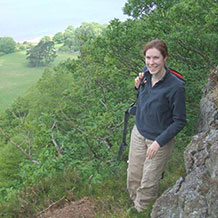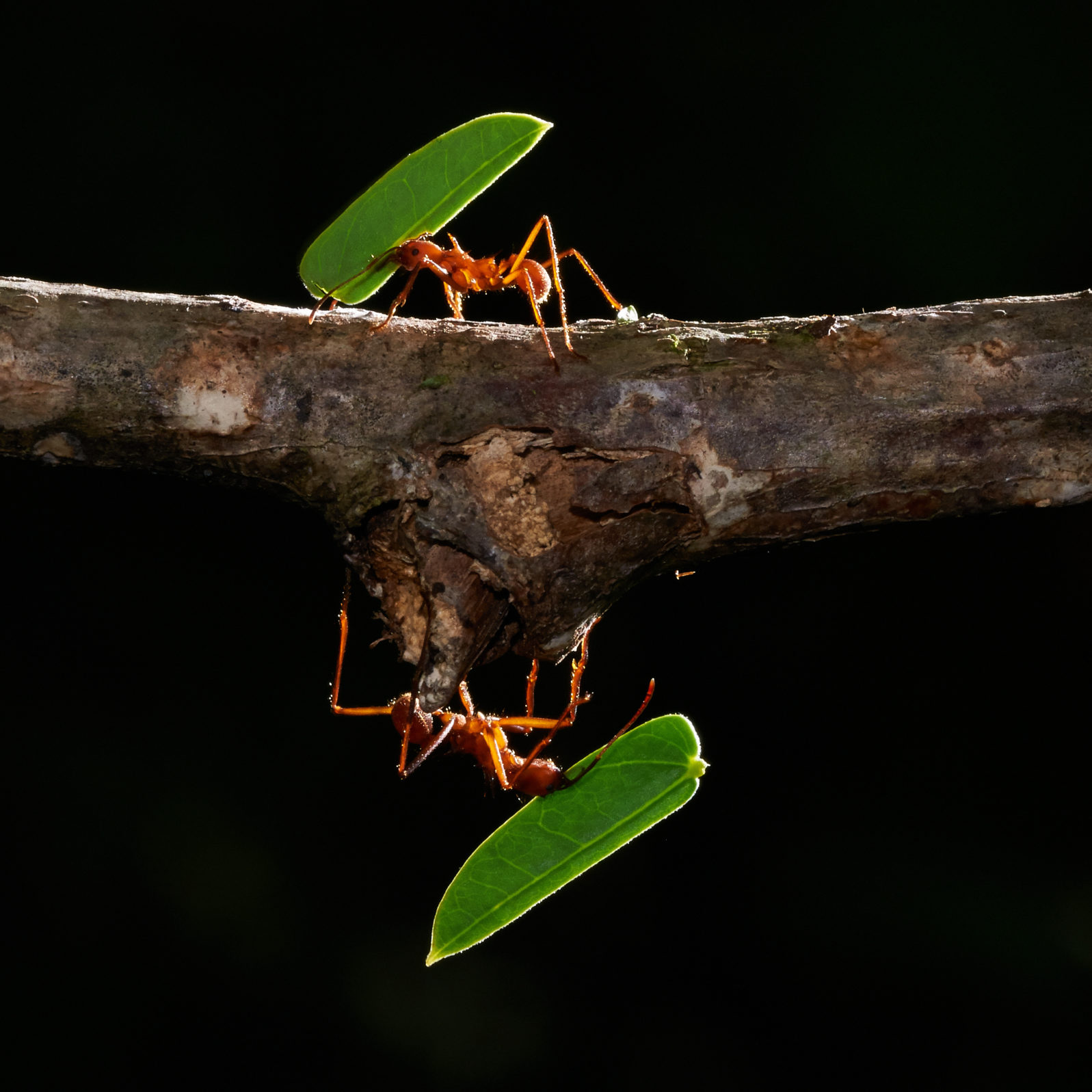The Hive Mind: Leafcutter Ants Behave Like Farmhands But…
But they are actually following a colony algorithm rather than making individual decisionsEric Cassell, author of Animal Algorithms: Evolution and the Mysterious Origin of Ingenious Instincts (2021), tells us that his favorite type of ant (p. 97) is the leafcutter (Attini). Its complex fungus farming provides insight into the “hive mind,” in which a natural version of a computer algorithm enables highly complex decision-making.
There are 39 known species of leafcutters in the American tropics, easily recognized as the long trails (up to 30 metres) of ants, all carrying pieces of leaves they have stripped from trees. They bring them into underground nests featuring perhaps a thousand chambers housing millions of ants. There they chew up the leaves and cultivate the fungus that feeds their larvae and themselves (along with plant sap). The leafcutters are well adapted to the task because their jaws function like saws and they can carry about 50 times their weight. They can strip a small tree overnight:
In New World tropical rainforests, the large nests of these ants are often found among large trees that are spaced far apart with little undergrowth—a parklike setting created by the ants themselves. Many Atta species clear ant “highways” radiating out from the nest, along which wide columns of their kind can march unhindered. – Britannica
Management of the fungus brought to the nest is a highly technical affair, as Cassell notes:
There are various other ways the ants maintain the health of the fungus. These include producing growth hormones and secreting antibiotics to depress competing fungi and microorganisms. Hölldobler and Wilson comment that the symbiotic relationship between leaf-cutter ants and fungus “should be viewed as a highly integrated superorganism that is more than the sum of its parts. The ants’ division of labor and much of their social behavior are shaped by the details of this symbiotic relationship.”
Eric Cassell, Animal Algorithms: Evolution and the Mysterious Origin of Ingenious Instincts at Discovery Institute Press, 2021, p. 99
The study of the antibiotic protocols followed in these vast, complex, but impersonal structures has provided useful insights into chemicals and pharmaceuticals for humans.
The Hive Mind
But what organizes all this? Well, no ant does. It’s best to see the colony as a whole as a superorganism, of which the ants are components. Much of what appears to be decision-making is the outworking of algorithms, as Cassell observes in his book.

Behavioral biologist Stephen Pratt at Arizona State University offers a helpful analogy at Knowable Magazine:
Bob Holmes: How is an ant colony like a brain?
Stephen Pratt: In the analogy, an ant is a brain cell, or neuron, and a colony is a brain. Neurons are simple relative to the whole to which they belong. Their interactions with each other generate the highly complex output of the brain as a whole. Cognition emerges from the interactions among very large numbers of neurons.
The same thing happens in an ant colony. Colonies make decisions, they allocate labor, they move cohesively. All of those group-level properties emerge from interactions among large numbers of individual colony members. A brain or a colony processes information about its environment and about its own state, and then produces some adaptive behavior that’s appropriate for the conditions.
Bob Holmes, “The mind of an anthill” at Knowable Magazine (September 14, 2018)
So, as a neuron is one tiny component of a brain, the individual ant is one tiny component of a self-organizing colony with a hive mind. Individual ants make immediate decisions — but they make them in light of the direction of the colony as a whole.
Ant behavior specialist Elva Robinson offers an example of how the hive mind works among the colonies of ants in her lab: A colony’s survival depends in part on fat stored in ants’ bodies and the younger ants are the fatter ones. They stay in the colony and look after the eggs, larvae, and pupae — also guarding the fat. The older ants, who go out to forage, have become leaner (and perhaps therefore hungry). They also have shorter expected life spans so overall, their greatly increased risk of dying outside the nest is less of a loss to the colony. They bring back food but mainly give it to the fatter, protected ants, remaining lean themselves. Robinson comments:

These ants are great examples of self-organisation because each ant is making a decision based only on the information that it has about itself. It doesn’t have to know the overall system of the colony and that’s quite an important lesson for lots of human systems where we tend to focus a lot on centralised control where you have one control centre collecting all the information and deciding what to do. But obviously, if there’s a problem with that control centre then your whole system will break down. For ants, decisions are processed in a very distributed way, so all the individuals contribute. And if any one individual is taken out of the system, it will still work. So in the case of our experiment, if some ants were removed as we did in our experiment, then the next leanest ants will go out. And if you keep on removing ants then more and more corpulent ants — more fat ants — will start to go outside. So it’s all very self regulating.
Elva Robinson, “The Hive Mind — How Ants Know Their Place” at The Naked Scientists (June 6, 2010)
With their very small individual brains, the ants would need a self-regulating system in order to work together as a colony on a very complex task like fungus farming:
We humans struggle to understand the hive mind because our human condition is a world of individual minds that can, with some effort, be got to work together to solve a problem — at least for a while. But individuality inevitably gets the upper hand because, for better and worse, that is how we are made. And it is apparently not how ants are made.
You may also wish to read: Do ants think? Yes, they do — but they think like computers . Computer programmers have adapted some ant problem-solving methods to software programs (but without the need for complex chemical scents). Navigation expert Eric Cassell points out that algorithms have made the ant one of the most successful insects ever, both in numbers and complexity.
and
How do insects use their very small brains to think clearly? How do they engage in complex behaviour with only 100,000 to a million neurons? Researchers are finding that insects have a number of strategies for making the most of comparatively few neurons to enable complex behavior.
